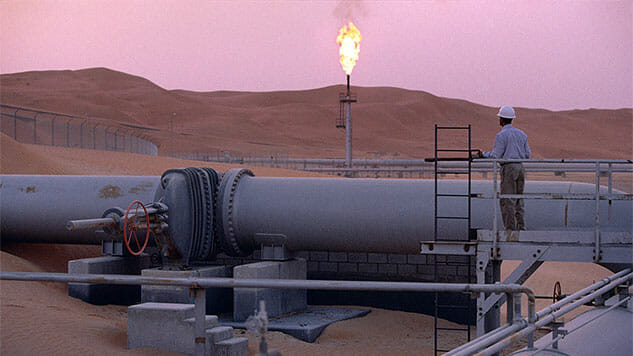How the Oil Facility Attack in Saudi Arabia Could Lead to War
Photo by Reza/Getty
The Saudi Aramco oil processing facility in Abqaiq, Saudi Arabia was attacked on Saturday by a reported dozen cruise missiles and more than 20 drones. Analysts of the site reported at least 17 hits on what is the world’s largest oil processing facility. Saudi Arabia announced later that there were no fatalities or injuries despite raging fires, but an estimated 5.7 million barrels in global oil supplies were interrupted. Such a shortage will undoubtedly cause global oil prices to rise, yet political consequences of such an event could have far more severe ramifications than economic ones.
Iran is seen as a possible perpetrator of the attack, by both Saudi Arabia and the U.S. A group of Houthi rebels in Yemen have claimed responsibility for the strike, and the Iranian government has denied involvement.
Saudi Arabia has claimed that Iran was behind the attack, but presented no evidence, and that even if the Houthi rebels conducted the attack, they were supplied by the Iranian government, which has indeed supported the group before. Saudi Arabia leads a West-supported military coalition supporting Yemen’s government, while Iran backs the Houthi rebels in Yemen’s ongoing civil war.
In support of Saudi Arabia’s stance, the U.S. government released satellite images that they say reveals the missiles came from the northwest, not Houthi-controlled territory to the Southwest. What is northwest of Abqaiq, you ask? Iran.
The attack comes to already-precarious foundations of Saudi/Iranian relations. The countries have always been in a deadlocked struggle for dominance in the region, and U.S. involvement in this attack could be the catalyst for war between the three countries.
Trump and his ever-changing cabinet of cohorts had plenty to say about the incident on Twitter, and their reactions can help us anticipate what their future actions may be:
Saudi Arabia oil supply was attacked. There is reason to believe that we know the culprit, are locked and loaded depending on verification, but are waiting to hear from the Kingdom as to who they believe was the cause of this attack, and under what terms we would proceed!